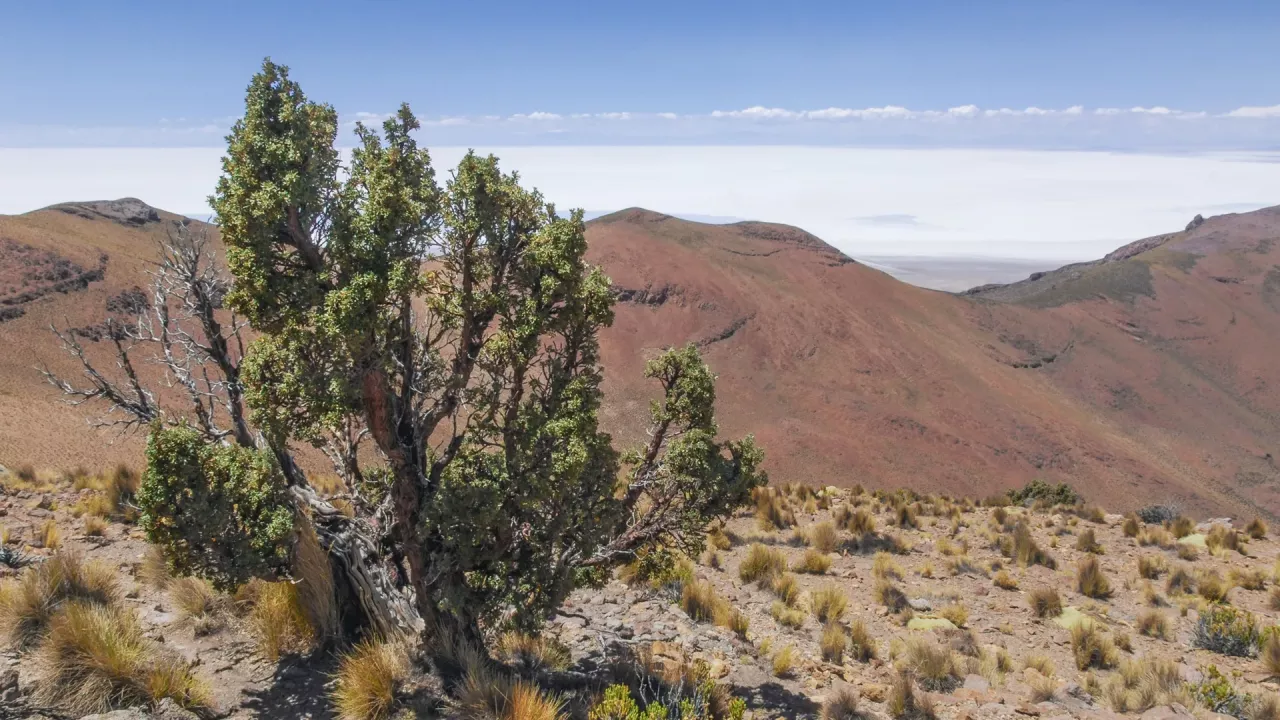
New paper from Milagros Rodríguez-Caton: 300 years of climate history hidden in tree rings
The proportion of these isotopes, sensitive to environmental changes, has allowed the reconstruction of rainfall three centuries ago in the Andes Mountains of South America. These records correspond to climatic memories reflected in the thickness of tree rings, corals in the tropical Pacific and glaciers in the southern tropical Andes.
Tree rings, corals and glaciers record the planet's climate history and the challenge is to decipher their language. That's exactly what a study published in the journal Communications Earth and Environment (Nature) by reading the rings of five ancient trees and reconstructing the history of rainfall in the Andes Mountains of South America from 1700 to 2013.
This is possible thanks to an advanced technology that tracks two stable isotopes of oxygen: the "heavy" or oxygen 18 and the "light" or oxygen 16. These isotopes leave traces in the wood of trees and offer information about how the tree has evolved. rain cycle over the years. In particular, the study found that the region spanning Bolivia, Peru, northern Chile and northwestern Argentina has experienced phenomena ranging from droughts to periods of heavy rain.
The method also covers phenomena that affect precipitation and temperature around the world, such as El Niño cycles and other cyclical climate events that occur every 10 to 12 years and affected by changes in Pacific Ocean surface temperatures.
The usefulness of studying tree rings
The team said that the results of this study are useful to complement growth ring-based reconstructions carried out in the region, better understand the centuries-old variability of natural precipitation and predict future scenarios.
"With classical instrumentation, which has been used since the 80s, we can know rain events from 30 to 40 years ago. But these data from more than 300 years help us understand cycles that occur every many years (10, 20 or 30 years), and that affect precipitation on a local, regional and also global scale.“said Milagros Rodríguez, researcher at Columbia University at the time of the study, first author, guest at CREAF and now a researcher at CONICET in Argentina.
The research data was taken from a 500-year-old tree of the unique species Polylepis tarapacana, which lives at an altitude of more than 4.000 meters. These specimens were found on the Uturuncu volcano in Bolivia and are between 500 and 700 years old.
The secret to uncovering past rainfall patterns lies in tree rings, specifically the ratio of oxygen 18 to 16. Rainwater contains these molecules, so when absorbed by tree roots, it penetrates in their tissues, including tree rings. Their ratio indicates how much rain there is.
"This method has enormous sensitivity, because we can look, for example, at how much it rained in this region in the year 1900, and also study phenomena such as El Niño or detect other events that occur approximately every decade"explains Laia Andreu-Hayles, ICREA research professor at CREAF and principal investigator at Columbia University when the study began.
This is the first time that rainfall reconstruction has been carried out using this technique in this field and shows that it is very effective because they only cover 5 plants in the study: "Other research uses tree ring thickness to track past climate, but you need more trees to draw conclusions"Andruu-Hiles said.

MARIGIO@HISPEED.CH
Nature's climate memory
Another surprising result was that the data reflected by the tree rings coincided with previous studies carried out on ice cores - samples taken from glaciers - as well as on corals from the tropical Pacific, which also store oxygen molecules in their physical memory 16 and 18 .
In particular, it should be noted that all of them record weather phenomena that occur approximately once every decade. This means that as the sea surface warms, rainfall patterns may change in some places.
"This is great news because we will be able to reconstruct the past climate in a much more extensive and precise way.”Rodriguez concluded.
Ecoportal.net
With information of: https://www.agenciasinc.es/
Reference:
Rodriguez-Caton M. et. to the. "A 300-year tree-ring δ18O-based precipitation reconstruction for the South American Altiplano highlights decadal hydroclimate teleconnections." Communications Earth and Environment